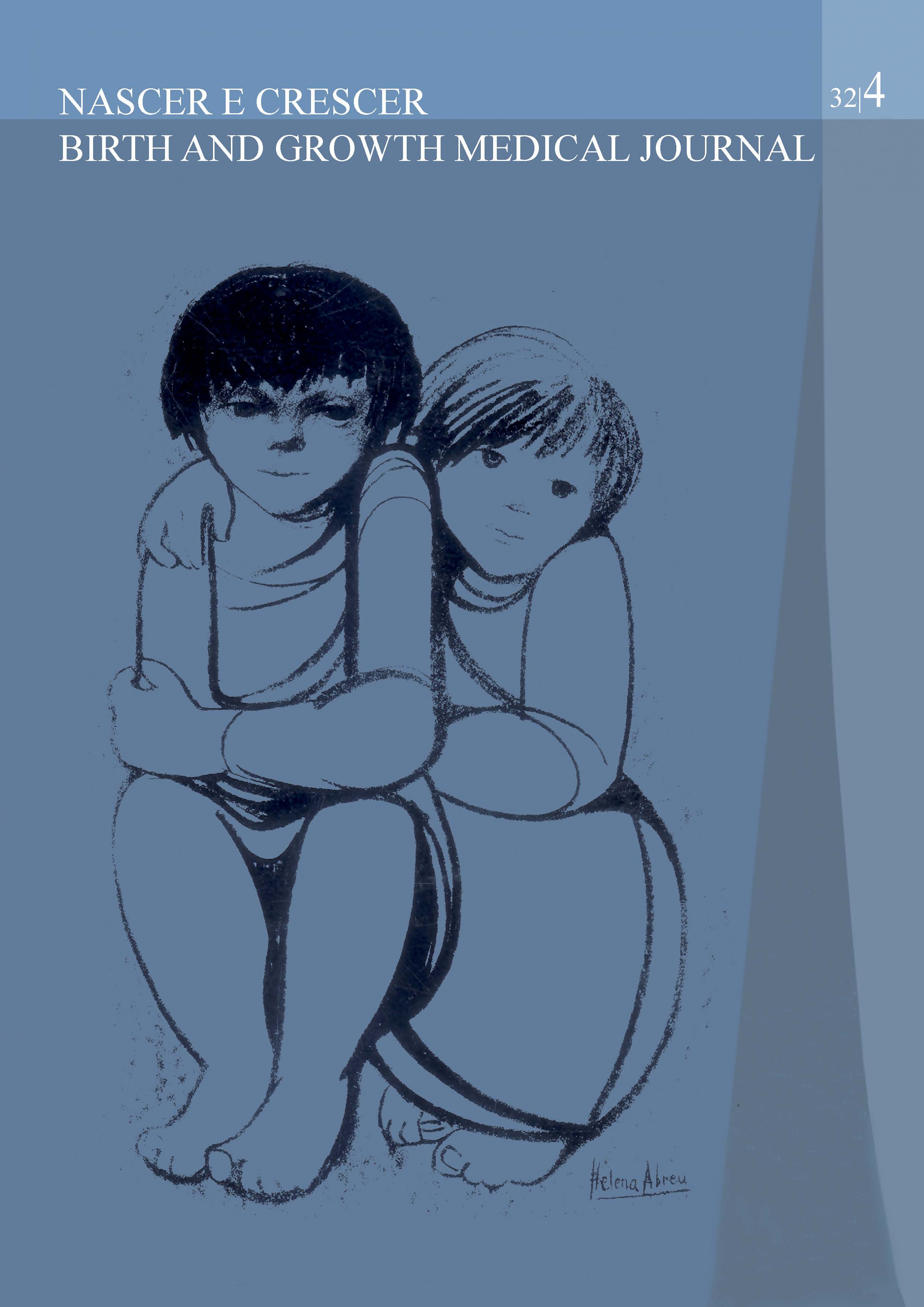Childhood neglect: Another perspective on childhood obesity
DOI:
https://doi.org/10.25753/BirthGrowthMJ.v32.i4.26514Keywords:
child abuse, child neglect, childhood obesity, body mass indexAbstract
Childhood obesity is a multifactorial condition. Extreme cases are often associated with the inability of caregivers to follow the recommended diet plan, despite prior warnings of the potential risks associated of non-compliance.
A seven-year-old girl with a body mass index (BMI) of 38.6 kg/m2 (z-score +7.3) and multiple comorbidities was seen in a Pediatric Nutrition outpatient consultation. After several attempts to educate her guardians about the potential risks of obesity, the girl was referred for a multidisciplinary evaluation and placed in a children’s home. With adequate nutrition and regular exercise, significant improvements were achieved in BMI (23.5 kg/m2; z-score +2.06). After three years, the girl was returned to her family home by court order, with subsequent worsening of her BMI (maximum 40.7 kg/m2; z-score +4.07), despite information provided by the medical team to social services and the court.
Given that caregivers play an essential role in the prevention of childhood obesity, persistent refusal to follow therapeutic recommendations coupled with indifference in the face of red flags meets the criteria for abuse.
Downloads
References
Kumar S, Kelly AS. Review of Childhood Obesity: From Epidemiology, Etiology, and Comorbidities to Clinical Assessment and Treatment. Mayo Clin Proc. 2017; 92(2):251-65. doi: https://doi.org/ 10.1016/j.mayocp.2016.09.017.
Smith JD, Fu E, Kobayashi MA. Prevention and Management of Childhood Obesity and Its Psychological and Health Comorbidities. Annu Rev Clin Psychol. 2020; 7 (16):351-78. doi: https://doi.org/ 10.1146/annurev-clinpsy-100219-060201.
Ten S, Maclaren N. Insulin resistance syndrome in children. J Clin Endocrinol Metab. 2004 ;89(6):2526-39. doi: https://doi.org/ 10.1210/jc.2004-0276.
Dabas A, Seth A. Prevention and Management of Childhood Obesity. Indian J Pediatr. 2018; 85(7):546-53. doi: https://doi.org/ 10.1007/s12098-018-2636-x.
Varness T, Allen DB, Carrel AL, Fost N. Childhood obesity and medical neglect. Pediatrics. 2009; 123(1):399-406. doi: https://doi.org/ 10.1542/peds.2008-0712.
Alexander SM, Baur LA, Magnusson R, Tobin B. When does severe childhood obesity become a child protection issue? Med J Aust. 2009; 190(3):136-9. doi: https://doi.org/ 10.5694/j.1326-5377.2009.tb02313.x.
Article 35º in Law and Protection of Children and Adolescents in Danger (Law number 147/99, 1st September).
Article 3º, number 1 and 2 (subparagraph c), in Law and Protection of Children and Adolescents in Danger (Law number 147/99, 1st September).
Article 4º, number 1 and 2 (subparagraph c), in Law and Protection of Children and Adolescents in Danger (Law number 147/99, 1st September).
Resnicow K, McMaster F, Bocian A, Harris D, Zhou Y, Snetselaar L, et al. Motivational interviewing and dietary counseling for obesity in primary care: An RCT. Pediatrics. 2015; 135:649–57. doi: https://doi.org/ 10.1542/peds.2014-1880.
Borrello M, Pietrabissa G, Ceccarini M, Manzoni GM, Castelnuovo G. Motivational Interviewing in Childhood Obesity Treatment. Front. Psychol. 2015; 6:1732. doi: https://doi.org/ 10.3389/fpsyg.2015.01732.
Luque V, Feliu A, Escribano J, Ferré N, Flores G, Monné R, et al. The Obemat2.0 Study: A Clinical Trial of a Motivational Intervention for Childhood Obesity Treatment. Nutrients. 2019; 11(2):419. doi: https://doi.org/ 10.3390/nu11020419.
Thomas-Eapen N. Childhood Obesity. Prim Care. 2021; 48(3): 505-15. doi: https://doi.org/ 10.1016/j.pop.2021.04.002.
Downloads
Published
How to Cite
Issue
Section
License
Copyright (c) 2024 Inês Alexandra Azevedo, Benedita Bianchi Aguiar, Joana Silva, Elizabeth Marques, Maria José Silva, Virgínia Monteiro, Lúcia Gomes, Miguel Costa

This work is licensed under a Creative Commons Attribution-NonCommercial 4.0 International License.
Copyright and Authors' Rights
All articles published in Nascer e Crescer - Birth and Growth Medical Journal are Open Access and comply with the requirements of funding agencies or academic institutions. For use by third parties, Nascer e Crescer - Birth and Growth Medical Journal adheres to the terms of the Creative Commons License "Attribution - Non-Commercial Use (CC-BY-NC)".
It is the author's responsibility to obtain permission to reproduce figures, tables, etc. from other publications.
Authors must submit a Conflict of Interest statement and an Authorship Form with the submission of the article. An e-mail will be sent to the corresponding author confirming receipt of the manuscript.
Authors are permitted to make their articles available in repositories at their home institutions, provided that they always indicate where the articles were published and adhere to the terms of the Creative Commons license.


